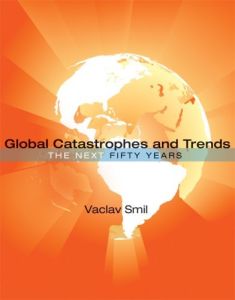Join getAbstract to access the summary!

Join getAbstract to access the summary!
Vaclav Smil
Global Catastrophes and Trends
The Next Fifty Years
MIT Press, 2008
What's inside?
The future isn’t what it used to be; separating the hysteria from the cold, hard probabilities.
Recommendation
Predicting the future is still impossible, but science has gotten much better at forecasting it, at least to the extent that it is informed by statistics and probabilities. Vaclav Smil speaks the truth as he sees it, according to mathematical information and indications. For instance, he refutes the “peak oil” scenario, but asserts that society’s transition to an economy that is less reliant on fossil fuel is long overdue, environmentally and politically. Smil predicted the financial meltdown and the flu pandemic, so clearly he’s onto something. He delves into a variety of issues in this analysis of trends and calamities, from the economic decline of the U.S. to conflicts in Muslim countries, the aging of many national populations and the depletion of essential ecosystems. getAbstract recommends this fascinating account of the future as seen through the cold eye of a statistician.
Summary
About the Author
Prolific science writer Vaclav Smil teaches at the University of Manitoba. His books include Energy at the Crossroads and Energies: An Illustrated Guide to the Biosphere and Civilization.





















Comment on this summary